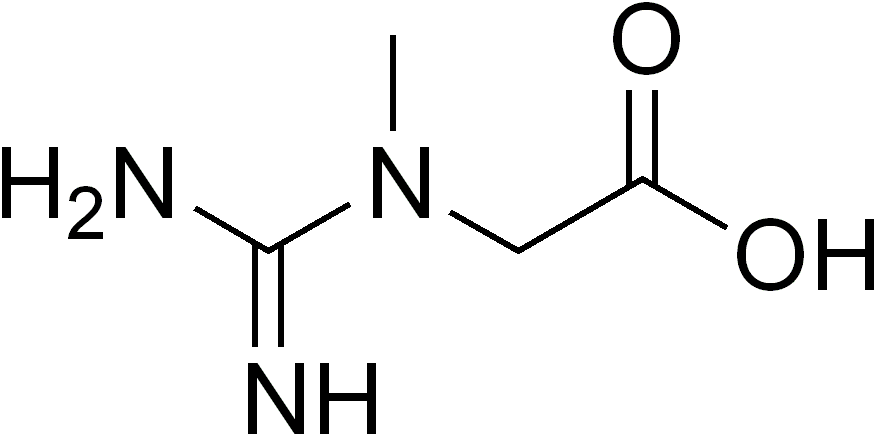Guanidinoacetate Methyltransferase Deficiency

Guanidinoacetate methyltransferase (GAMT) deficiency is a creatine deficiency syndrome characterized by global developmental delay/intellectual disability (DD/ID), prominent speech delay, autistic/hyperactive behavioral disorders, seizures, and various types of pyramidal and/or extra-pyramidal manifestations.
Epidemiology
Less than 100 patients are known worldwide.
Clinical description
Onset of manifestations of GAMT deficiency occurs between 3 months and 3 years of age. Affected individuals have mild to severe intellectual disability with a distinctive deficit in expressive language, regardless of the degree of the intellectual deficit. Seizures, of different types, are observed in most individuals and are often intractable. Behavioral disorders such as hyperactivity and autistic features are also frequent. Patients may also have movement disorders which mainly affect the extra-pyramidal system and manifest as chorea, athetosis and ataxia.
Etiology
GAMT deficiency is due to mutations in the GAMT gene (19p13.3). Different mutations (missense, nonsense, splice site, insertions, deletions) have been identified, located on various exons of the GAMT gene. The most frequently identified mutation, c.327G>A (p.K109K, splice site exon 2), is present in at least one allele in over 50% of families. c.59G>C is most frequently encountered in Portuguese patients. To date no genotype phenotype correlation has been established.
Diagnostic methods
The diagnosis is clinically suspected in children with DD/ID, speech/language delay, autistic behavior and seizures. Diagnosis is based on the presence of high levels of guanidinoacetate (GAA) in the urine/blood and low levels of creatine in the brain. Diagnosis is confirmed by genetic testing for mutations in the GAMT gene. In case of unknown significance of a gene variant, measurement of GAMT enzyme catalytic activity helps to confirm a functional deficiency. Methods for newborn screening have been established and pilot projects are currently being conducted in various newborn screening programs.
Differential diagnosis
The differential diagnosis in children with a cerebral creatine deficiency includes L-Arginine:glycine amidinotransferase (AGAT) deficiency and X-linked creatine transporter deficiency. In the case of a partial cerebral creatine deficiency, argininosuccinic aciduria, citrullinemia type I, and gyrate atrophy of the choroid and retina (see these terms) should be considered.
Antenatal diagnosis
Preimplantation or prenatal genetic diagnosis is possible for at risk couples.
Genetic counseling
Transmission is autosomal recessive. In case of family history, genetic testing for the family of the proband and genetic counseling with regards to family planning is recommended.
Management and treatment
Treatment consists of oral high dose creatine monohydrate, in combination with ornithine supplementation (100-800mg/kg/day given in 3-6 doses daily) and/or dietary restriction of arginine (15-25mg/kg/day). Management of GAMT deficiency involves regular measurement of plasma guanidinoacetate and ornithine levels. Treatment improves seizures and behavioral and movement disorders, but it cannot reverse intellectual disability and developmental delay incurred before diagnosis. Early detection is essential in avoiding irreversible brain damage.
Prognosis
GAMT deficiency is a treatable disease and is not life threatening, however life expectancy is limited, particularly in those who have multiple disabilities and severe seizures.